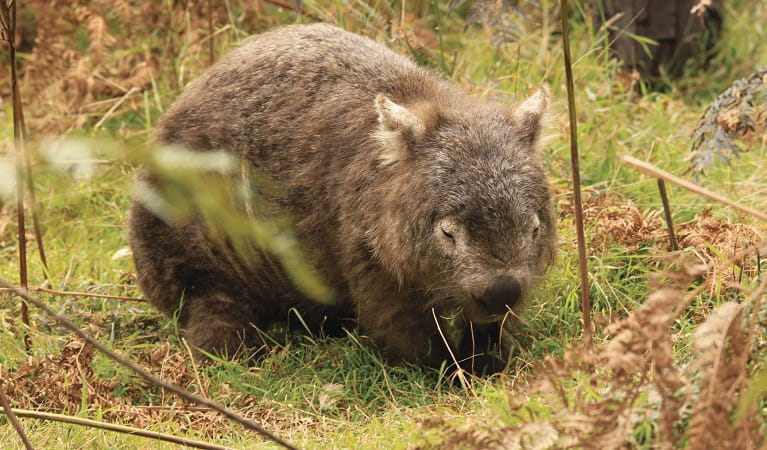Bents Basin wombat program
Bents Basin State Conservation Area
Overview
Wombats aren’t just cute – they’re also 'nature's bulldozers' and the most intelligent marsupial. In Bents Basin State Conservation Area they're threatened by mange. Help us treat them to ensure their ongoing presence in this area.
- Work
- Specific threatened species (plants or animals)
- When
Volunteering dates under review.
- Accessibility
- No wheelchair access
- Grade
- Medium. Suitable for adults and teens 18 years and over, with medium fitness. You'll walk along creek lines, riverbanks, cliff edges and in steep and sometimes thickly vegetated rough terrain, in all weather.
- Entry fees
- Park entry fees apply
Left untreated, wombats with sarcoptic mange die a slow and painful death. Early treatment resolves the disease, and treated wombats aren't likely to be reinfested.
This pilot program for treating wombats with mange relies on volunteers. You’ll help us monitor wombat health and understand the treatment's effectiveness. Wombats with mange are treated in their own environment and administer their own treatment when they brush under a burrow flap that releases ointment as they enter and leave their warrens.
Volunteer work includes:
- Making burrow flaps
- Trialling the flaps on wombat warrens and monitoring wombats’ reactions and burrows using remote sensing cameras
- Putting the treatment on burrow flaps
- Uploading camera data and tagging photos to identify wombats with mange, healthy animals and other wildlife.
Great things you’ll learn include using GPS and remote sensing cameras. All training is provided. It's a good idea to bring lunch, camera, insect repellant and change of shoes to travel home in.
Local alerts
For the latest updates on fires, closures and other alerts in this area, see https://www.nationalparks.nsw.gov.au/things-to-do/volunteer-activities/bents-basin-wombat-program/local-alerts
Park info
- in Bents Basin State Conservation Area in the Sydney and surrounds region
Bents Basin State Conservation Area is open 8am to 6pm from May to August and 8am to 8pm from September to April. The park may have to close at times due to poor weather or fire danger.
-
Park entry fees:
$8 per vehicle per day. Day passes are available from on-park pay machines that accept coins and credit cards, and you can also pay for your visit via the Park’nPay app.
Buy annual pass.
Visitor info
All the practical information you need to know about Bents Basin wombat program.
Getting there and parking
Get driving directions
From Wallacia (south/east entry):
- Drive southwest on Mulgoa Road/Tourist Drive 18
- Turn right onto Greendale Road
- Turn right onto Wolstenholme Avenue, and follow all the way down the road until the red ‘Road Ends’ sign. Park gates are on the right
- Bents Basin office is the first building on your left as you drive into the park
Parking
Free parking for volunteers
Facilities
There is no mobile phone reception.
Toilets
- Flush toilets
Picnic tables
Barbecue facilities
- Gas/electric barbecues (free)
- Wood barbecues
- Fire rings (bring your own firewood)
Carpark
Drinking water
Showers
- Hot showers
Electric power
No powered sites available
Maps and downloads
Accessibility
Disability access level - no wheelchair access
Not wheelchair-accessible
Learn more
Bents Basin wombat program is in Bents Basin State Conservation Area. Here are just some of the reasons why this park is special:
Aboriginal heritage
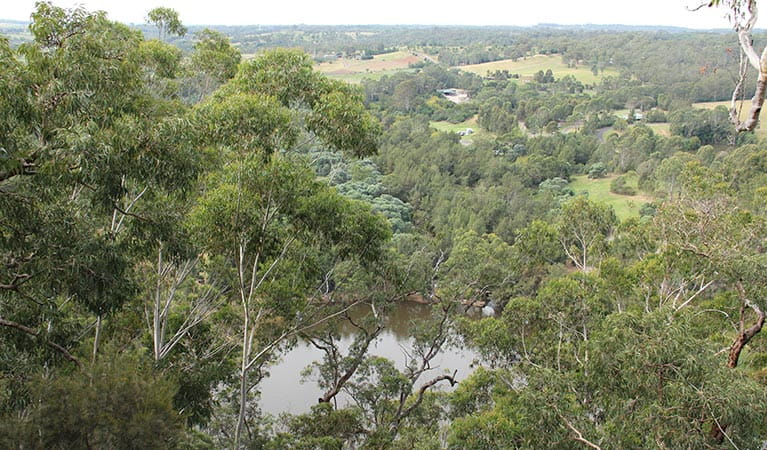
Bents Basin State Conservation Area is the traditional land of the Gundungurra, Dharawal and Darug people. Also known as Gulguer (meaning whirlpool or spinning), Bents Basin is associated with an awful aquatic creature called Gurungadge or Gurungaty. This creature is prominent in the area's ancestral stories. Archaeological finds suggest the area was also an important trading place. Bents Basin and the adjoining Gulguer Nature Reserve protect a variety of Aboriginal rock art and artefacts.
Bygone days
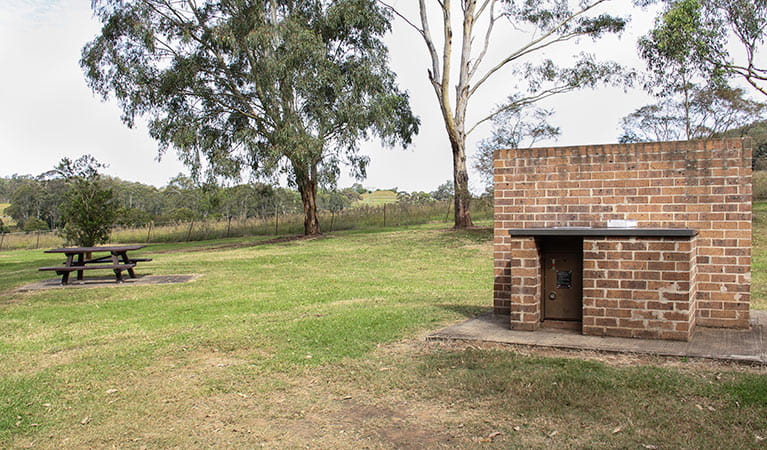
Explorer and botanist George Caley was the first European to visit the area in 1802 and afterwards collected plant specimens for preservation. The area was later used as a stopping point for early settlers travelling from the developing east. If you're interested in the local history of western Sydney, be sure to check out the historic inn, established in the 1860's and listed on both the state and National Heritage Register, you'll find it near Peppercorn picnic area.
Fascinating and fun
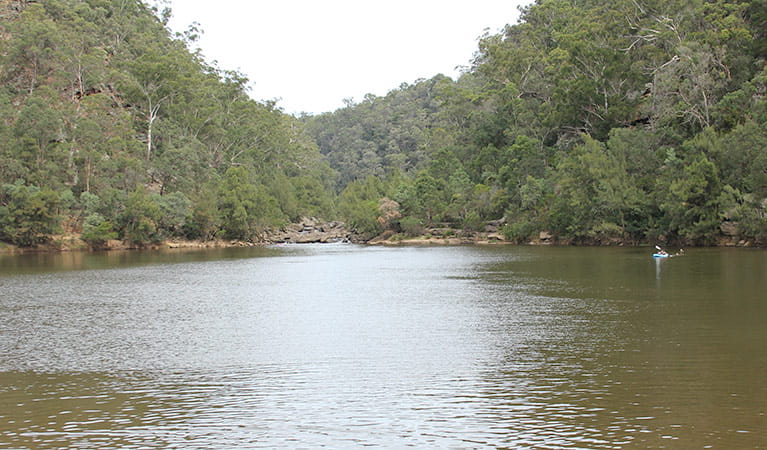
The basin itself is what draws most people here. Known as a scour pool, this geological formation is like a small lake, created over time by fast-flowing floodwaters exiting the gorge about 30-40km/hr. At 22m deep, its waters travel 150km before reaching the ocean. In addition to that, it's heaps of fun to visit for a spot for swimming, fishing, paddling and liloing.
Rare communities
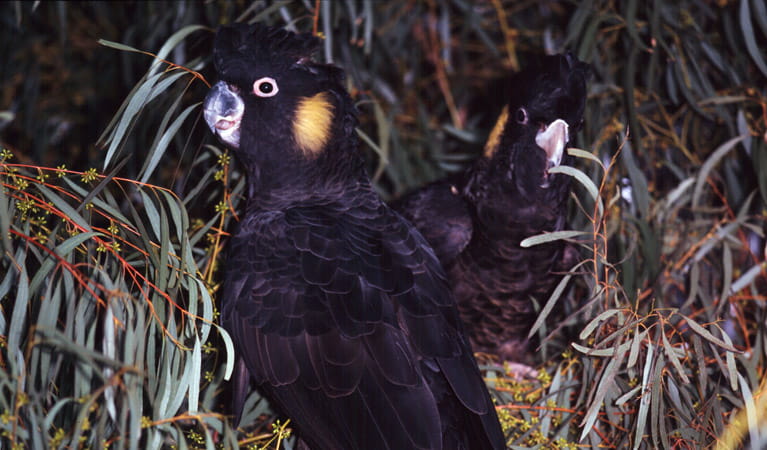
A visit to the park allows you to see majestic Camden white gums in one of only two known naturally-occurring populations. Look out also for Cumberland Plain woodland which once blanketed almost 30% of the Sydney Basin. Today, its scattered fragments cover less than 6% and remain under threat. Important fauna species include the regent honey eater, Cumberland Plain land snail, eastern bentwing bat, sooty owl and the glossy black cockatoo.
- Caleys lookout track Caleys lookout track is a short and steep walk through bushland of Bents Basin State Conservation Area near Penrith. Take your lunch – it’s a great spot for a picnic.
Plants and animals protected in this park
Animals
-
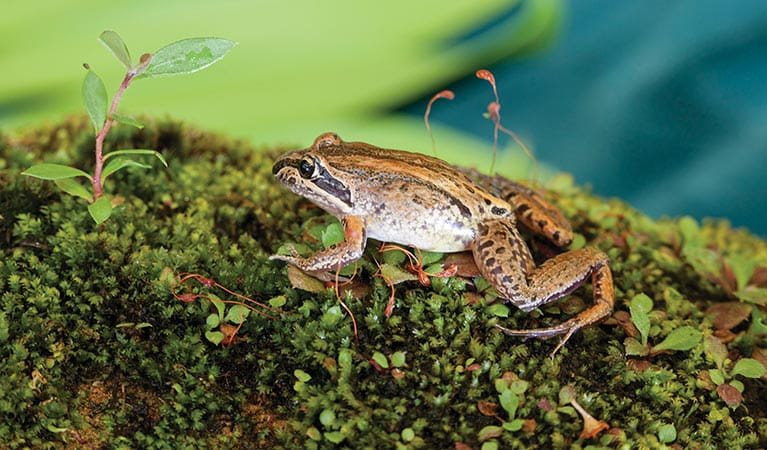
Brown-striped frog (Lymnastes peronii)
One of the most common frogs found in Australia, the ground-dwelling brown-striped frog lives in ponds, dams and swamps along the east coast. Also known as the striped marsh frog, this amphibian grows to 6.5cm across and has a distinctive ‘tok’ call that can be heard all year round.
-
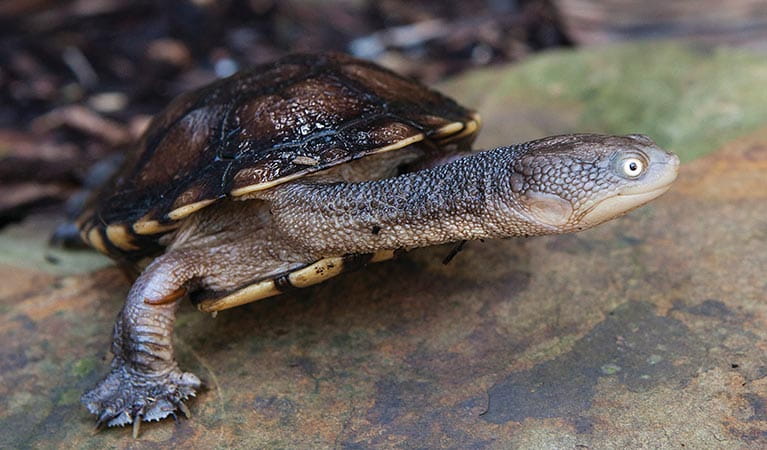
Eastern snake-necked turtle (Chelodina longicollis)
Found across most of NSW, the eastern snake-necked turtle, also known as the eastern long-necked turtle, can be found in swamps, lakes and inland waterways. This freshwater turtle is carnivorous and lives most of its life submerged on the water’s edge, searching for worms and snails.
-
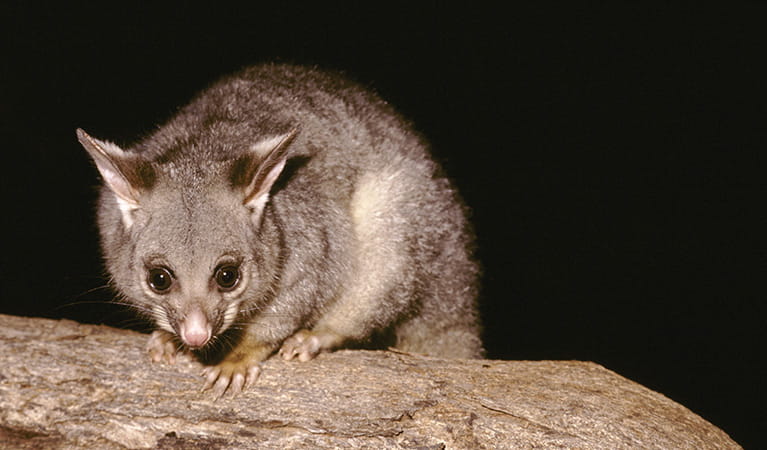
Common brushtail possum (Trichosurus vulpecula)
One of the most widespread of Australian tree-dwelling marsupials, the common brushtail possum is found across most of NSW in woodlands, rainforests and urban areas. With strong claws, a prehensile tail and opposable digits, these native Australian animals are well-adapted for life amongst the trees.
-
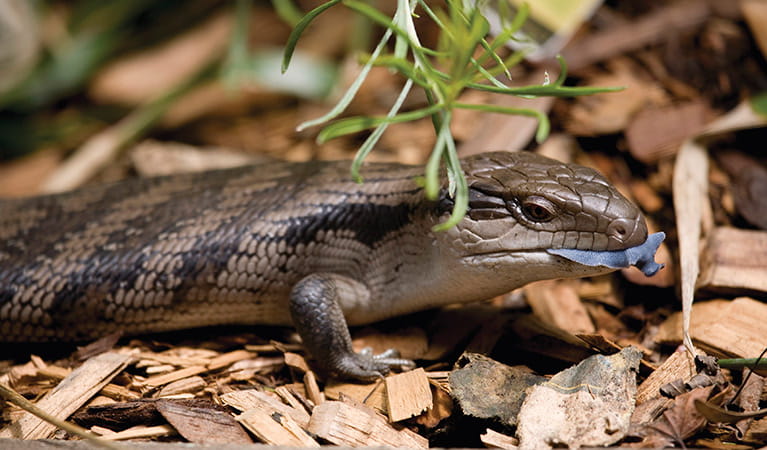
Eastern blue-tongue lizard (Tiliqua scinciodes)
The eastern blue-tongue lizard, one of the largest skinks in Australia, is found throughout most of NSW. When threatened, the eastern blue-tongue lizard displays its blue tongue in a wide-mouthed intimidating show. Not an agile animal, they feed on slow-moving beetles and snails.
-
Cumberland Plain land snail (Meridolum corneovirens)
The endangered Cumberland Plain land snail is only found on the Cumberland Plain, west of Sydney. During drought it digs deep into the soil to escape harsh conditions. Its brown shell is thin and fragile.

